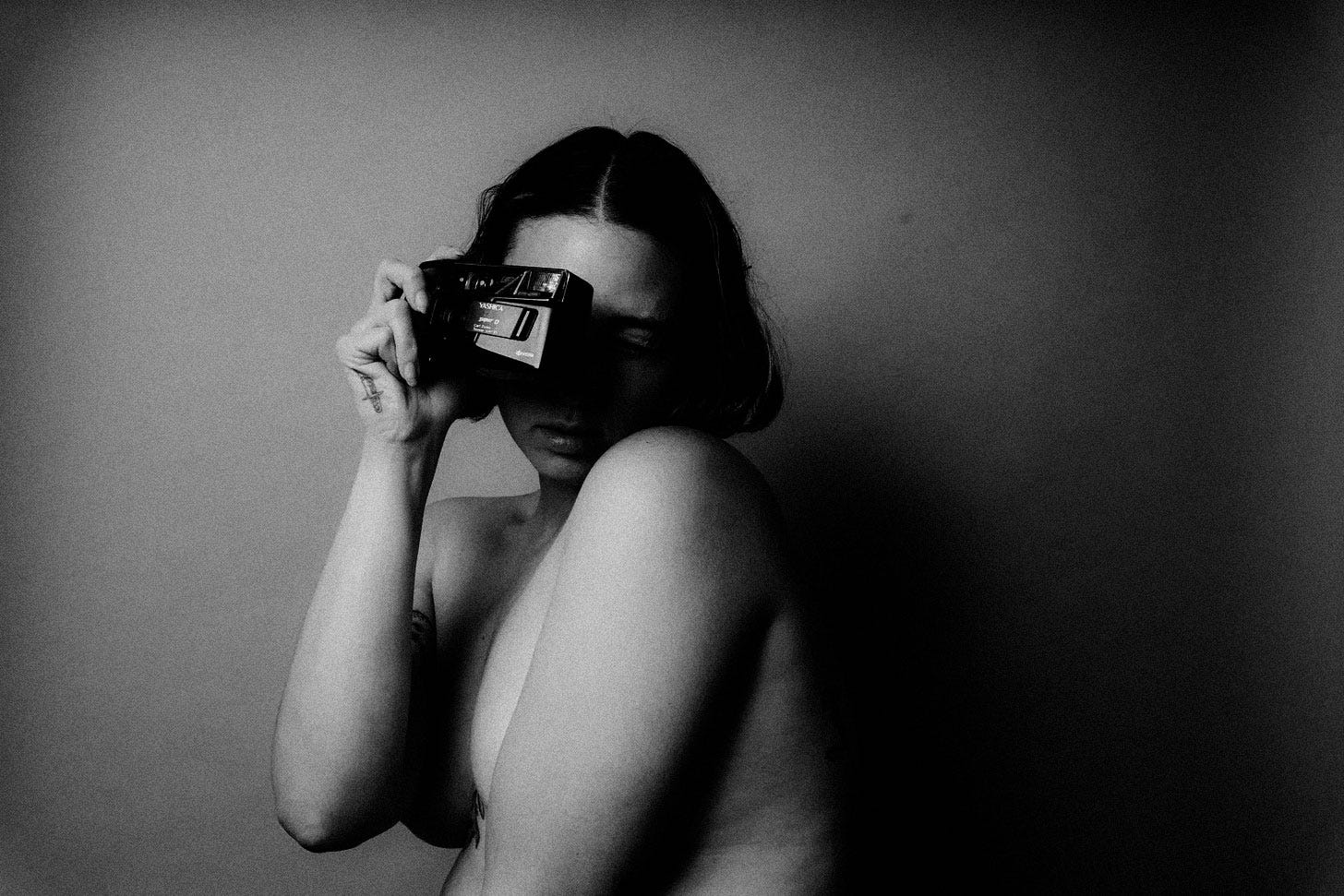Becoming artist & muse helped me break the body standard wheel
Grab my much beloved self-portrait e-book to start your own body reclamation journey.
\In 1989, the art group Guerrilla Girls explored the female body construct in their work, Do Women Have To Be Naked To Get Into the Met Museum? This piece exposed that less than 5% of the artists in the Modern Art Sections are women, but 85% of the nudes are female.
Studying photography and graphic design in college meant I was required to take many art history classes as foundational knowledge. I learned of the great masters and studied visual history through the eyes of men. But where are all the great female artists? The truth is, they were always there and instead assigned the role of Muse.
Not only were women the subjects of art, but they were often nude or some would say, naked, further solidifying the fascination of the female body. It’s important to note the difference between nude and naked. Nude implies consent to the artist’s use of the body, while nakedness is non-consensual viewing of the body, like, “ah, you’ve caught me in my birthday suit and now I must cover up!” Or, your ex shared your initially consensual nudes with their best friend and now they’re all over the internet.
Nude implies consent to the artist’s use of the body, while nakedness is non-consensual viewing of the body.
As I studied images through time, I noticed each period depicted the female body in a particular way, resulting in standards that rippled through culture. Art and media, more often produced by men, perpetuated standards of the female form. Representation of women of color displayed exoticism, sexualization, objectification, and ownership throughout history. Even art created by women would often adhere to these ideals because it’s how we thought we needed to be.
It wasn’t until the 1960s-70s, a period of free love and exploration of sexuality, that we began to see the rise of “feminist art”. Feminist artists reclaimed the female body and depicted it through a variety of lenses, like the newly coined genre: performance art. For many artists, using their bodies in performances became a way to both claim control over their own bodies and to question issues of gender and sexuality.
Unfortunately, that didn’t stop fads like dieting and plastic surgery to popularize in years ahead. In my case, growing up with stick thin models of the 90s made “heroin chic” the cool new trend. Literally looking like a corpse was the way I thought my body needed to look as a young teenager. Looking back, it horrifies me to see how unhealthy it was to consume these standards.
Art and the media, more often produced by men, perpetuated standards of the female form.
Finally, it seems we are edging into a new revolution. It’s about fucking time. Now more than ever, we see a range of bodies and expression through art and media in the digital age. Brands, music and movies seeking diversity, endless body positive selfies, and a passion for self love and treat yo’ self mindset. The cynical part of me thinks, “is it all just a trend?” And the hopeful part of me says, “not if I have anything to do with it.”
Body standards are a construct and art history is proof of that. I saw my body type in Renaissance paintings—women with small breasts, square bums and a curvy belly. At one point my body was the “ideal”, so why can’t it be ideal today?
When I pose for my own photos, as artist and muse, I discover the silver lining. With self portraiture, I create for myself, first and foremost, only allowing viewers access to my performance if I desire. Being both behind the camera and in front of it, the power of choice has shifted into my hands.
To this day, self-portraiture is one of the most powerful practices I’ve experienced that allows me to have a deeper connection to my body and creativity. It’s what I aim for when I work with clients in their own photoshoots as well.
Explore your unique form through your own lens with self portraits with My Body, by Self: 50-page intimate self portrait e-book with tips and 11-day self portrait journey as a form of self healing.









